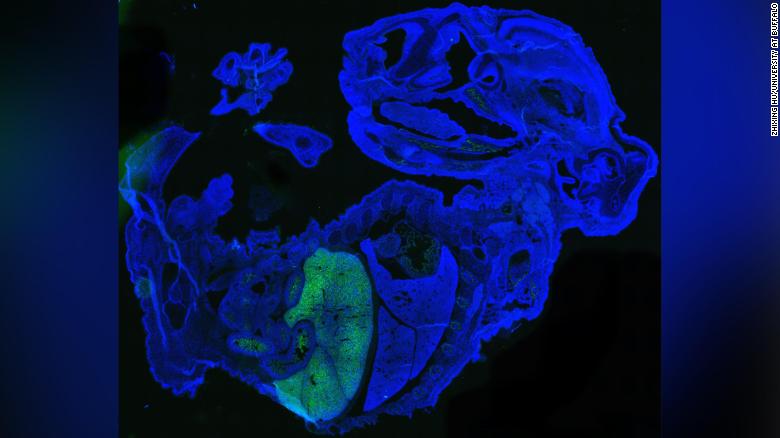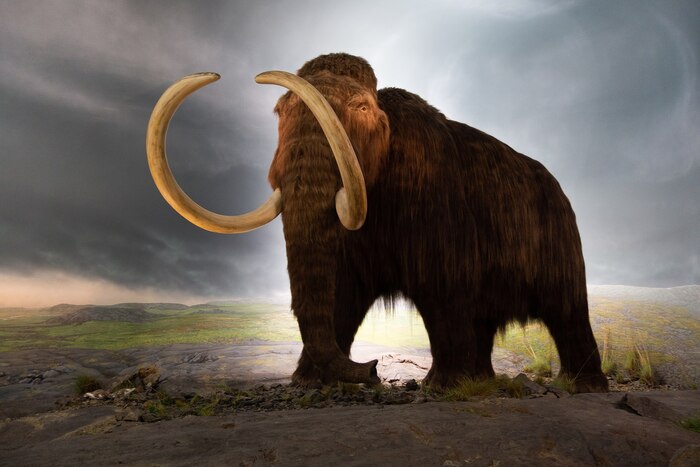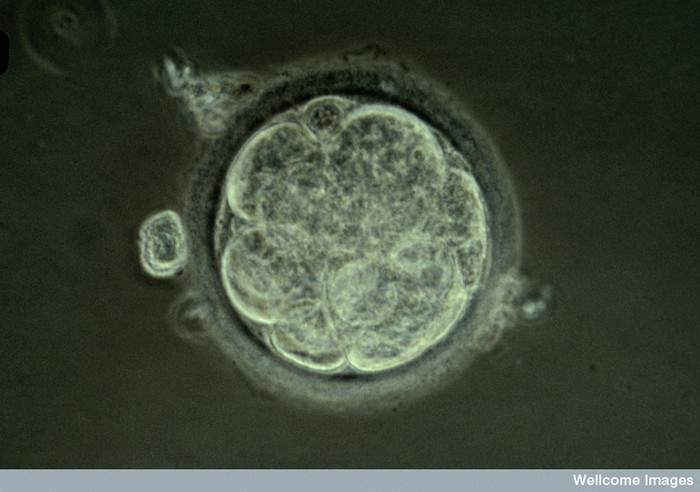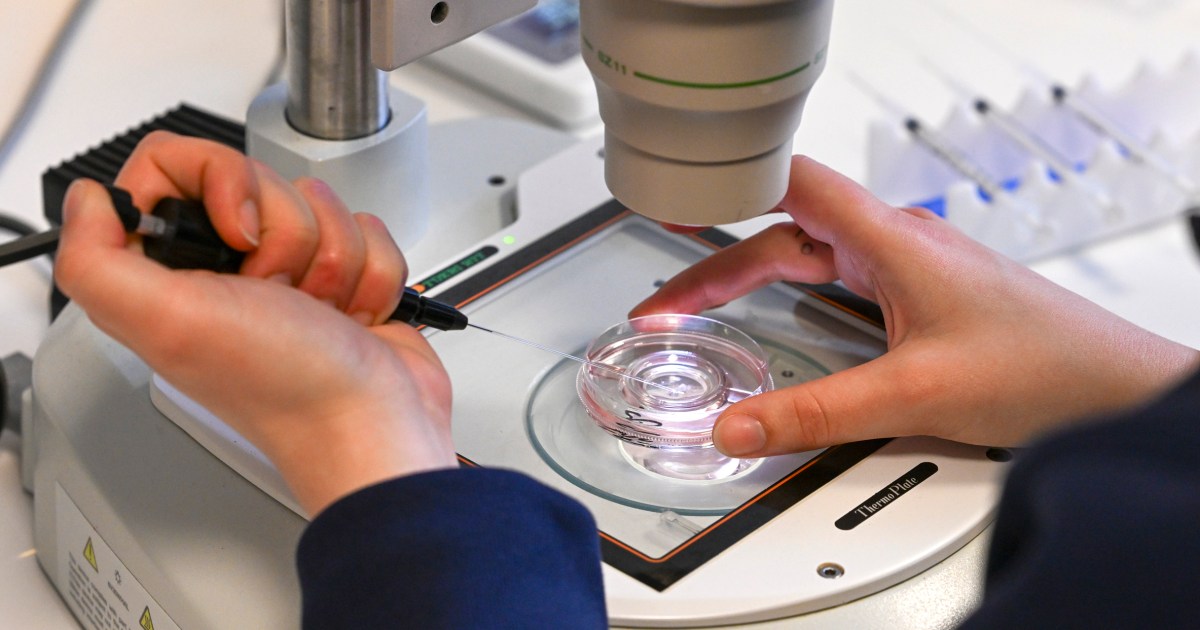- Click to share on Facebook (Opens in a new window)
- Click to share on Twitter (Opens in a new window)
- Click to share on LinkedIn (Opens in a new window)
- Click to email a friend (Opens in a new window)
(CNN) - Scientists have created a mouse embryo that is partly human: 4% to be exact.
The hybrid is what scientists call a human-animal chimera, a single organism that is made up of two different sets of cells, in this case, a mouse embryo that has mouse cells and human cells.
This human mouse chimera has by far the highest number of human cells ever recorded in an animal, according to the researchers. Their experiment suggests that many types of human cells can be generated in mouse embryos, and at a much faster rate than in human embryos.
And that, the scientists say, has enormous potential for treating human disease, possibly even for covid-19.
Researchers at the State University of New York at Buffalo and the Roswell Park Comprehensive Cancer Center published the findings last week in the journal Science Advances.
The news was previously reported by Popular Mechanics .
Findings have potential to treat disease
These findings are important for several reasons, said Jian Feng, a professor of physiology and biophysics at the University of Buffalo, one of the study's authors. On the one hand, it shows that it is possible to generate many types of mature human cells in mouse embryos, which could be used to produce cells, tissues or organs to treat diseases.
In this study, the team of researchers injected 10 to 12 human stem cells into embryos from developing mice. In 17 days, those stem cells turned into millions of mature cells, including human red blood cells and eye cells.
The image shows a large number of human cells (in green) in a 17-day-old mouse embryo (in blue). Most human cells are red blood cells, which are accumulated in the mouse's fetal liver.
In a human embryo, it would take about eight weeks to generate human red blood cells, and even longer to generate human eye cells, Feng said.
"These observations suggest that the mechanism that specifies development time may be changed," he wrote in an email to CNN. "With this implication, there will be more dramatic discoveries in the future."
The team used revolutionary technology
In previous research, scientists had only detected about 0.1% of human cells in mouse embryos.
That is why it is so surprising that these human mouse chimeras exhibited 4% human cells. And due to the technique the team used to count the cells, Feng said that even that figure is an understatement.
The team accomplished this feat by converting human pluripotent stem cells, which can potentially produce any cell or tissue the body needs to repair itself to an earlier state.
The conversion of those cells made them compatible with the internal group of cells within an early-stage mouse embryo, which generates all the cells in the body. So when the human cells from the previous stage were injected into mouse embryos, they developed much better than they otherwise would have.
"We reasoned that if we can make human pluripotent stem cells behave like mouse pluripotent stem cells, human cells should mix well with mouse stem cells in a mouse blastocyst," wrote Feng. "And that's exactly what we found."
The team's experiment indicates that "the genetic program built into a mouse embryo and the genetic program built into human stem cells can cross pretty well," Feng said.
In other words, there is enough evolutionary compatibility between mice and humans that mouse embryos are a relatively good environment for culturing human cells.
"Life is a DNA-based software system that harnesses energy to produce information," wrote Feng. "This experiment is like emulating Windows on a Mac."
LOOK : DNA test reveals description of a person who lived thousands of years ago
Future implications could include organ development
Human-animal chimeras have been a point of ethical debate among scientists. Although they could be used to grow human organs for transplants, some scientists say there are serious risks that need to be explored.
“The possibilities have many researchers full of emotion. But they also pose serious ethical dilemmas about the moral status of these partially human animals, ”wrote neuroscientist and animal advocate Lori Marino in a 2017 opinion piece for Stat News.
"Chimera test subjects must be human enough to serve as effective role models for health research, but not so human as to qualify for the protection of this research."
Feng said his research is still in its early stages and more study is needed. But he added that the technology to make human stem cells more compatible with mouse embryos has a number of potential applications.
One, Feng said, is that it can generate better mouse models for studying human diseases, including covid-19. Mice can also be used to develop human immune cells or respiratory cells.
"Such chimeric mice would be very useful in studying covid-19, which severely affects humans, but hardly affects mice," said Feng.
"Another example could be malaria, in which the pathogen specifically infects human red blood cells through a mosquito bite. If we can make a mouse with even more human red blood cells, it would be a very good model for studying malaria. "
Future studies could also explore whether this technique could be applied to larger animals, such as pigs, to generate organs for transplantation, Feng said. Although he said such possibilities are far, they are promising.
"At the time of the first plane, all potential applications only existed in the minds of some people," said Feng. “If society decided that it was a horrible idea for humans to fly, we would lose many things that are wonderful for everyone. A society that sees the world for what it is, not as it should be, is an effective society that can move forward. ”
embryo



/cloudfront-eu-central-1.images.arcpublishing.com/prisa/65WJB3EG45EZDLAF5QNRLPUDDU.jpg)

/cloudfront-eu-central-1.images.arcpublishing.com/prisa/QZBKEHFL6RHI5FSPQNNBZGIIUA.jpg)



/cloudfront-eu-central-1.images.arcpublishing.com/prisa/KMEYMJKESBAZBE4MRBAM4TGHIQ.jpg)


/cloudfront-eu-central-1.images.arcpublishing.com/prisa/EXJQILQR5QI7OMVRTERD7AEZAU.jpg)
